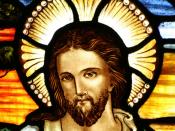There is said to be over a thousand years of literature in the Christian Bible as it is today. This essay will look at the New Testament of the Bible, what the factors were that lead to its formation and the validity of those factors.
The Bible must be looked at not as a single book, but as a collection of twenty-seven books. These books as we have them today are not originals, they have been translated from copies of copies and as ancient manuscripts were copied by hand, there is much room for error in this sense alone.
As Jesus promised to return, the early Christians thought the perusia (the second coming) would be soon and so didn't see the need in writing anything down. This is known as the oral period. Towards the second century, direct witnesses to Jesus' teaching had died and 'heretical' writings such as Marcion's bible were in circulation.
These had began to be classed as 'scripture' by some. Theologian Tertullian first used the term 'New Testament' in order to distinguish these new writings from older scriptures (today what we know as the Old Testament or the Hebrew Bible).
The early Church set about establishing a canon of scripture for the New Testament when it became apparent that Jesus still hadn't returned, and may not do as soon as the first Christians had thought. Marcion's bible was already in existence around the end of the first century, as a set of works intended as authoritative. However, it had rather unorthodox theology such as his belief in two gods and it rejected the Old Testament as authoritative scripture. Montanism was another branch of Christianity that held what were considered to be heretical ideas about these new writings. There needed to be a consensus, an 'official canon'...

